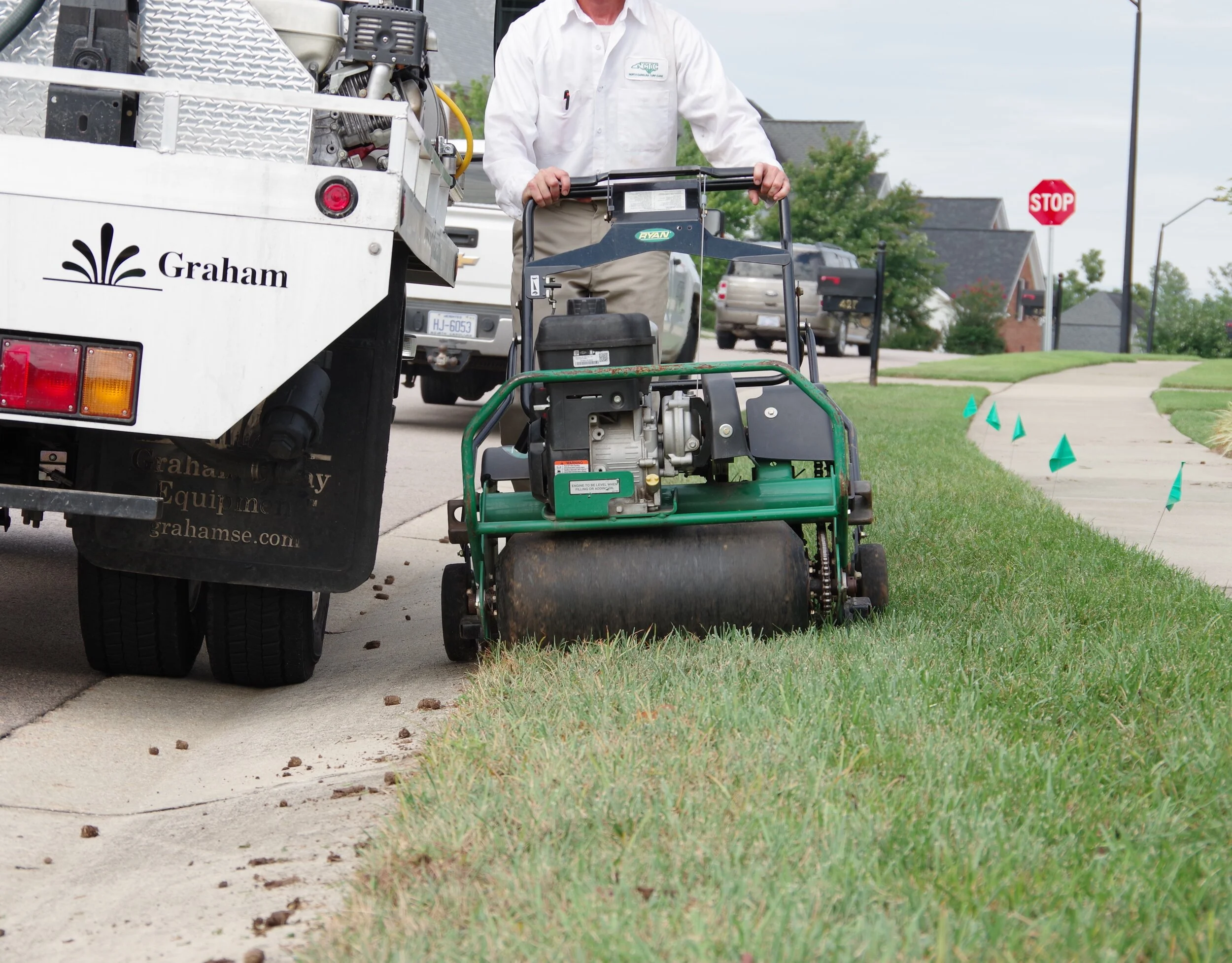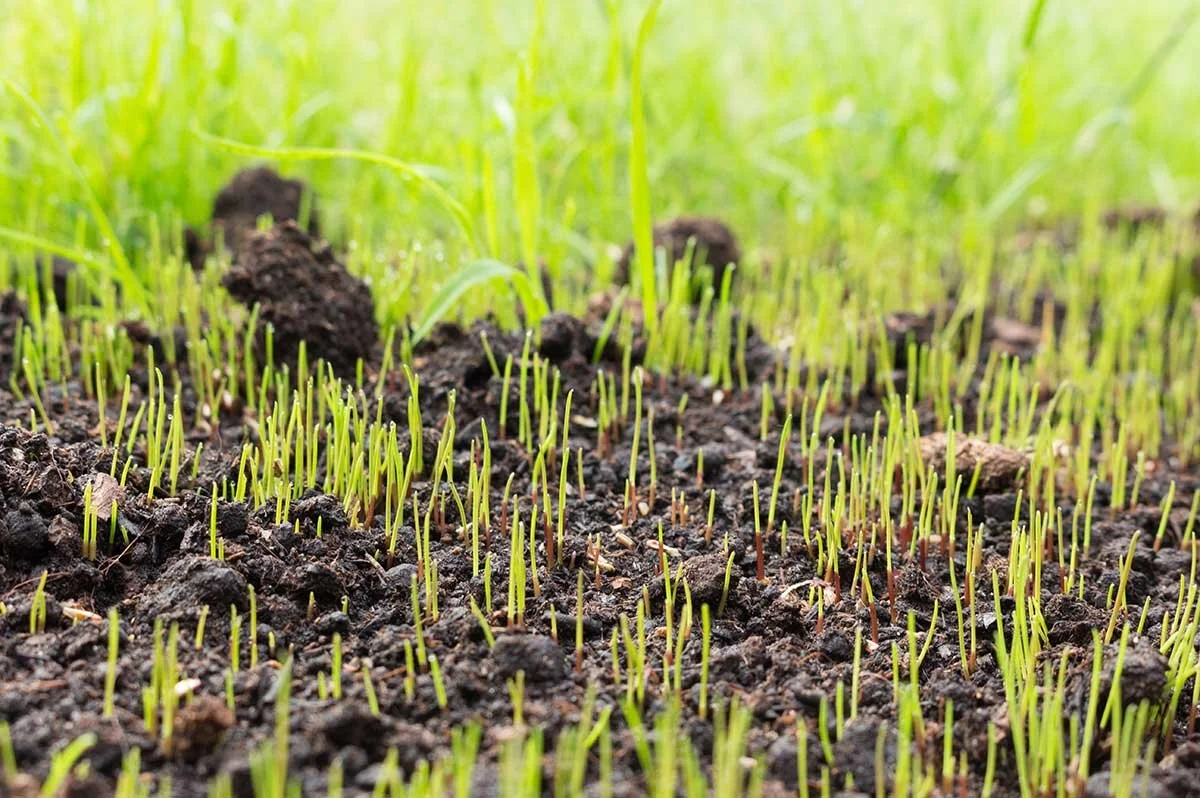3 Steps Post Aeration & Seeding
Starting, Encouraging, & Maintaining
North Carolina Turf Care has aerated and seeded my lawn. Now what? We know you want your yard to be healthy, lush, and green, and hey we do too! Let’s make that happen. Keep scrolling to find 3 Action Steps that will set up your lawn for success post aeration and seeding.
Wait, What Is Aeration?
If your soil is compacted, it could be caused by many things like the notorious NC red clay, walking across or driving on your lawn, or even having years of Autumn leaves layering on top of your soil. Aeration is the process that helps relieve that compression.
If your ground is properly saturated, the aeration process will remove finger sized cores from the ground and then deposits them onto your turf. This process helps relieve soil compaction at the root level and allows for increased root development in the fall. It also helps top and bottom circulation improve, making watering or natural rainfall more efficient. In short, we aerate lawns to properly prep them for seeding.
3 Action Steps
Step #1: Starting
Our standard recommendation is to water your lawn 2 times per day, for 2-3 weeks. Sticking with this time frame ensures your lawn will get the water it needs to grow, without washing away the seed before it has germinated. Keep it moist!!!
Step #2: Encouraging Germination is the first thing you’ll be able to visually notice happening to your lawn. You can expect to see germination from tall fescue seed in approximately 14-20 days. Once you see germination taking place, it’s best to water 2-3 times per week for 15-20 minutes per area. The best time to water is between 5:00am - 10:00am. Try avoiding evening and night time watering. Watering during that time puts your lawn at greater risk for disease. If you’re not seeing the results you want yet, don’t fret! If properly placed (don’t worry, we did), your seed will live on.
Pro Tip: Once your seed has gotten wet one time, however; it will need to stay wet. It desires constant attention once it has received water for the first time. Water the seed for the next 15 days for best results. Once the 15 days is up, resume back to normal scheduling.
Step 3: Maintaining
Raking
If it’s in post germination stage, it’s okay to go ahead and rake up those falling leaves. Just use caution. The type of rake you use truly matters. A clunky or heavy rake could tear your lawn that’s doing its best to grow. Instead, try a spring-tine rake using upward pull motions being gentle over seeded areas.
Mowing
If you are not a professional mower and just choosing to tackle your lawn yourself, the best time to mow your lawn is after it has germinated. Timing depends on what your lawn looks like. If you lawn is plush and thick, go ahead and mow. If you have bare areas, avoid mowing them until they become the height of the rest of your lawn. Once they do, resume mowing per usual.
Pro Tip: We consider the perfect mowing height to be 4 - 4½ inches. Considering having your lawn professionally mowed? We can help! Let us know about your lawn care needs. Have additional lawn care questions or curious about other services we offer? Contact us today!






